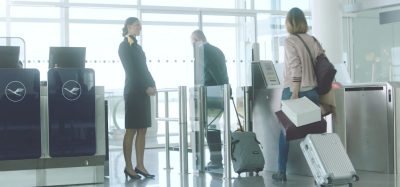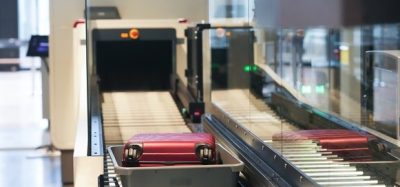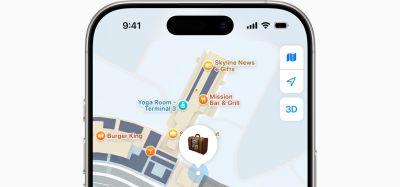Baggage Handling: A more efficient process
Posted: 17 June 2014 | Andrew Price | No comments yet
IATA’s pioneering ‘InBag’ program will help to deliver a 20 per cent efficiency improvement in baggage operations. Head of Airport Operations, Andrew Price, provides an overview.
IATA estimates the costs of all baggage operations as $29 billion per year, which equals to around $10 per bag per journey. On the other hand, the baggage ancillary revenues reach only $10 billion. This article examines how this gap might be addressed through process efficiencies and product innovations to challenge costs whilst improving customer service. Let’s examine an ideal scenario for the passenger when it comes to baggage. The passenger is offered baggage services with their ticket. There are four options to choose from:
- Have your bag collected and then delivered to and from your home/office and destination
- Tag your bag at home, using a home-printed baggage tag or electronic baggage tag, and then use a fast bag drop facility
- Use self-service at the airport to self-tag your bag and then drop it at the bag drop
- Use a traditional check-in.
Baggage is then processed through the airport in the most efficient manner possible, with information on the bag shared between all the relevant parties responsible for its journey. The passenger is told if there are any exceptions for their bag – a delay or other issue – and is reunited at the destination airport or hotel. Of course, the process is so smooth and faultless that everybody would choose to check a bag rather than carry hand luggage…This ideal world is possible, but it does not come as a matter of course for all passengers.
Since 2013 IATA has worked on the ‘InBag’ program to deliver some of the key challenges in making this a reality for all.
Home pick-up and delivery
There are two challenges frequently raised against the collection and delivery of baggage. One is security, the other is customs. Neither is a compelling argument. All baggage is screened to ensure it is safe to travel. Before this screening takes place all baggage could be a threat. Securing the bag before the point of screening does not make a difference to the security process, it just adds costs. Customs could also preview arriving bag images and intercept them with the passenger details. The real challenge is sharing information on the baggage journey in a standard manner that allows local entrepreneurs to deliver a consistent product when picking up and delivering bags. This is something that IATA can help with through the industry data model.
XML data model
Type B baggage messages are hard to generate and interpret, but there is a better way. XML allows the data object to be self-defining, so that message elements are not rejected when data is incomplete. XML also opens the door to a host of easy-to-use developer tools, making it quick to implement systems and easier to maintain them. Most airlines and airports already have internal XML models, so why as an industry do we translate to a legacy system when it comes to sharing information?
In 2014, IATA will pilot information sharing using an XML model over an internet channel between two airports and airlines. The aim is to share baggage information indicating the process steps that have been completed on the bags’ journeys. This is the first step in capturing and sharing baggage tracking information, which is a requirement for all airlines from 2018. It will be necessary to record the delivery and acquisition of bags, especially when delivering a bag back to the passenger, loading it onto an aircraft or placing it into an airport baggage system.
Home-printed baggage tags
Here, regulation is a challenge. The European Customs Code does not allow for anything other than the current traditional baggage tag. Customs agencies and the European Commission are working with IATA to update the customs code to facilitate the new tag design and processes. The Transportation Security Administration also imposes constraints, and recent amendments to operational processes for some carriers have shown that these are not blockers.
The requirements for home-printed tags are twofold: A nice clear tag that can be used in the airline operation and a nice clear tag that facilitates passenger flow at customs. These are not mutually exclusive needs, and a solution will soon be found.
Electronic tags
The same regulatory issues apply to electronic tags as with home-printed tags. There is also an added complexity of standardisation on the interfaces between the airline and the tag. A whole world of possibilities is being opened up. Options such as passenger tracking, displays that enable intermodal travel and exception processes are just the beginning in this area.
Electronic receipt
Both of the above need to have an electronic baggage claim receipt. Traditional baggage tags can also benefit from these claim tags. A baggage claim receipt through an electronic channel such as e-mail, SMS or a smartphone application would include all the current information provided on a current physical baggage claim stub but without the need to print it and stick it to (and damage) passports or other travel documents.
The replacement from paper to an electronic version of baggage claim would also bring industry-wide cost savings, but airlines are getting valuable passenger contact information that can be used in times of disruption.
Baggage quality
Airlines are currently measured on their baggage performance by a ratio of mishandled bags to passengers. This is not a fair measure of performance. Firstly, it is overly simple. The same ratio is used for an airline offering a transfer product, and point-to-point carriers. The operations are totally different, so why is the same measure used? The similarity on the operations is the bags successfully loaded in the time agreed for loading compared to the total number of bags. Secondly, the figure hides many details. When an airline accepts a bag, it accepts responsibility for that bag. There are many parties involved in moving that bag though, and the right measures need to be aligned to the service levels agreed between all these parties. An airline should be able to compare the services offered at an airport and choose the one that performs the best. A simple traffic light system would allow this, where the airline sees the service status against agreements, and passengers see the airport status. Standard service level agreements are already available in the IATA Airport Handling Manual. The challenge is to introduce a standard set of measures that can be used to compare similar operations, and to do this without having to introduce a high level of manual effort.
Process enhancements
In today’s baggage world there is a lot of wasted effort. Some of this effort is on the rescreening of bags just because the physical location has changed, no matter that technologies used for screening at airports are often the same.
In the future, authorities at each transfer point through the bag journey will have access to the raw radiation map from the screening of the bag. Each party can then apply their own algorithm to the map so that an image appropriate to their needs is generated. This will enable the remote screening of baggage. The challenge is then just to ensure that the bag cannot be tampered with during the baggage journey. Such enhanced recognition will allow authorities to select how many bags they will rescreen remotely, with the exception of any occasions where they are experiencing an increased level of security threat.
A considerable amount of time can be saved – ensuring that challenging minimum connecting times can be met – if efficiency during the transfer process is enhanced.
It is never easy to make changes in the area of security, and this is for good reason. The proposed mechanism to allow remote security screening allows the secrets of the screening algorithms to be kept secret, and enables agencies to focus their efforts where the maximum benefit can be obtained. It is also possible to extend this mechanism to customs. The algorithms used in customs differ from security algorithms, but the raw radiation map need not. Customs could preview bags long before the bag actually arrived, and then use tracking techniques to match the bag and passenger. If a bag had been chosen for home delivery then it need only be intercepted from the arriving aircraft, and the passenger can then be matched on arrival.
Double handling is also another major inefficiency. In an ideal world an efficient set of processes would touch the bag one time, and then pass it to the next process. During the IATA baggage improvement programme visits there were occasions where over five handling companies were seen to move one bag between two aircraft. Where a common process is shared between airlines the local baggage committee is responsible for determining how that process can be most efficiently delivered. Processes should also have pre- and post-conditions. The pre-condition for placing a bag on a reclaim carousel is that the bag is an arrivals bag. This is checked by scanning the baggage label and comparing it to a terminating baggage service message. Doing this records the delivery of the bag, makes sure that transfer bags do not go landside and need additional processing and closes the baggage journey. It also allows for priority bags to be segregated from economy bags, multiple reclaim use and is a highly effective anti-fraud measure. A similar pre-condition exists for transfer baggage handling to ensure arrival baggage is not placed into a transfer system.
Check-in benefits from passengers arriving at the airport with their baggage already tagged. Simple, fast baggage drops are a key element in improving airport throughput. But check-in itself will soon be a thing of the past as more airlines opt for automatic check-in.
The above improvements in security, arrivals, check-in, transfers and handling are key drivers in delivering a 20 per cent improvement in efficiency for baggage operations. This is a major aim for the ‘InBag’ program. The aim of having a digital version of the baggage assets is being delivered through XML, and this drives integration into the entrepreneurs and integrators who will develop local business models to deliver bags. Baggage quality provides the monitoring mechanism that allows feedback on the operation to be gathered simply and effectively.
That ideal world is not so very far away, and when we get there we will find a new ideal to strive for. IATA is ready and able to help the industry reach the ideal world.
For further information about the schemes discussed in this article email: [email protected]
Biography
Andrew Price is the Head of Airport Operations at IATA. From 2008 to 2012 Andrew ran the IATA Baggage Improvement Programme that investigated why bags are mishandled and recommended solutions to them. During the same time, baggage mishandling reduced globally by over 50 per cent. Andrew has also led programmes examining the benefits of RFID in baggage, and the developed IATA’s current baggage program, ‘InBag’. Andrew holds a Bachelor of Engineering in Electronics, a Postgraduate Diploma in Information Systems Engineering and has just completed an MBA.
Join our free webinar: Beyond silos: How ecosystem thinking elevates the airport experience
In today’s complex aviation landscape, airports are moving beyond siloed operations to embrace a new era of collaboration. This webinar focuses on how leading airports are using ecosystem thinking to adapt, personalize, and continuously improve every touchpoint, boosting both passenger satisfaction and non-aeronautical revenue.
Date: 13 Nov | Time: 10:00 GMT
REGISTER NOW TO SECURE YOUR SPOT
Can’t attend live? No worries – register to receive the recording post-event.


















